When we told our friends and family that our next destination was Ethiopia everyone was like what? Ethiopia had always interested us as it was the only African country that has not been colonised so has preserved its traditional culture. It is also very different to Kenya, Rwanda and Tanzania it lacks beaches and safaris but has the most beautiful mountain range called the Simien Mountains.
Route Round Ethiopia
Ethiopia is a huge country and we only had two weeks so decided to prioritise visiting Lalibela, Gondar and the Simien Mountains in the northern highlands of the country. We visited Lalibela (famous for the ten underground churches) and then castles of Gondar for their history and culture. Simien mountains we chose for the nature and the endemic animals of Ethiopia especially the gelada monkeys. Ethiopian airlines does a good deal that if your international flight has been booked with them you get a discount of 50% for all the domestic flights.
The Capital, Addis Ababa
We started our trip in Addis Aba for two days. It is a very modern city and reminded us of some of the towns we visited in Turkey. Addis Ababa is home of the African Union and is Ethiopia largest city with a population of 4.8 million. The next day we met our guide and went to visit Mount Zuqualla. This dormant volcano is crowned by a beautiful crater lake at its summit. There is a monastery by the lake, which was reportedly founded in the 4th century by Saint Abo. Every Saint in Ethiopia has their own celebration day and Abo’s is on the 14th March and 15th of October every year. Ethiopia is famous for its pilgrimages and celebrating the saints days and this would be the start of us learning about their strong history of Christianity.
Lalibela and its Underground Churches
The next day we took a two hour flight to Lalibela from Addis Aba. Lalibela is one of the country’s holiest cities located in the Amhara Region of Ethiopia. It is the centre of the pilgrimage each year for Ethiopian Orthodox Christians during Christmas. Ethiopia was one of the earliest nations to adopt Christianity and Lalibela is home to 10 rock-hewn monolithic churches. It is a beautiful countryside town.
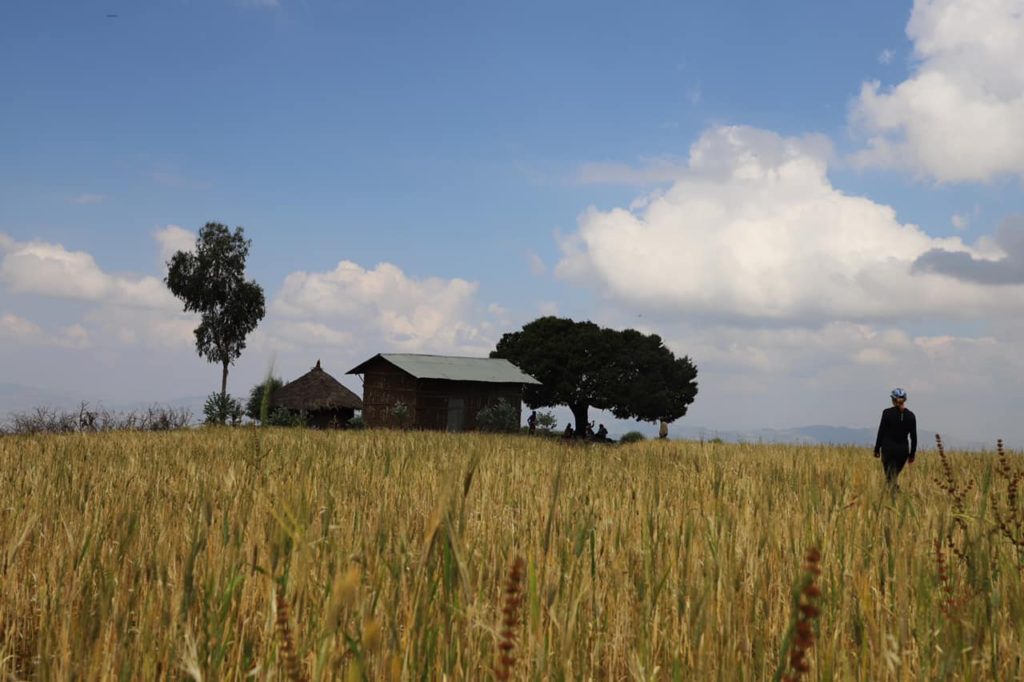
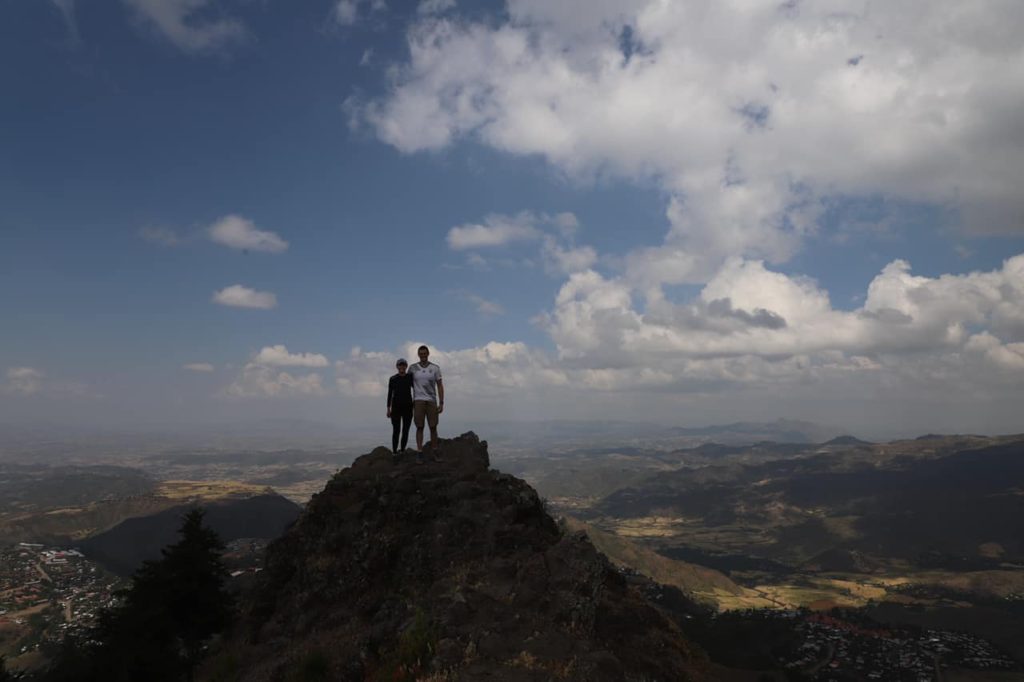
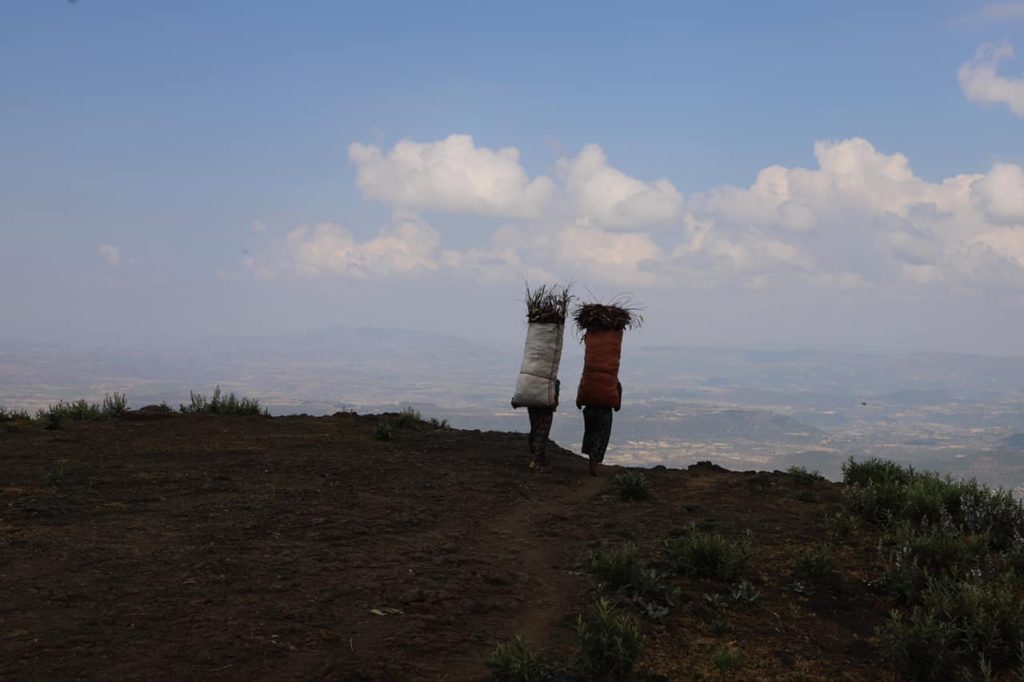
We wanted to visit Lalibela for its churches. It is said that King Lalibela designed the churches in the 7th and 13th century to be a symbolic representation of Jerusalem. It is amazing to think that each church was carved from a single piece of rock to symbolise spirituality and humility.

The last of the eleven rock-hewn churches and the grandest is the Church of Saint George. They were all impressive but not quite as markedly as the Church of Saint George set slightly apart from the others. The church plunges dozens of feet below ground level and there is a staircase that takes you to the bottom. It can be entered like the others, and requires a downhill trek into what feels like the jaws of the earth to reach the front entrance.
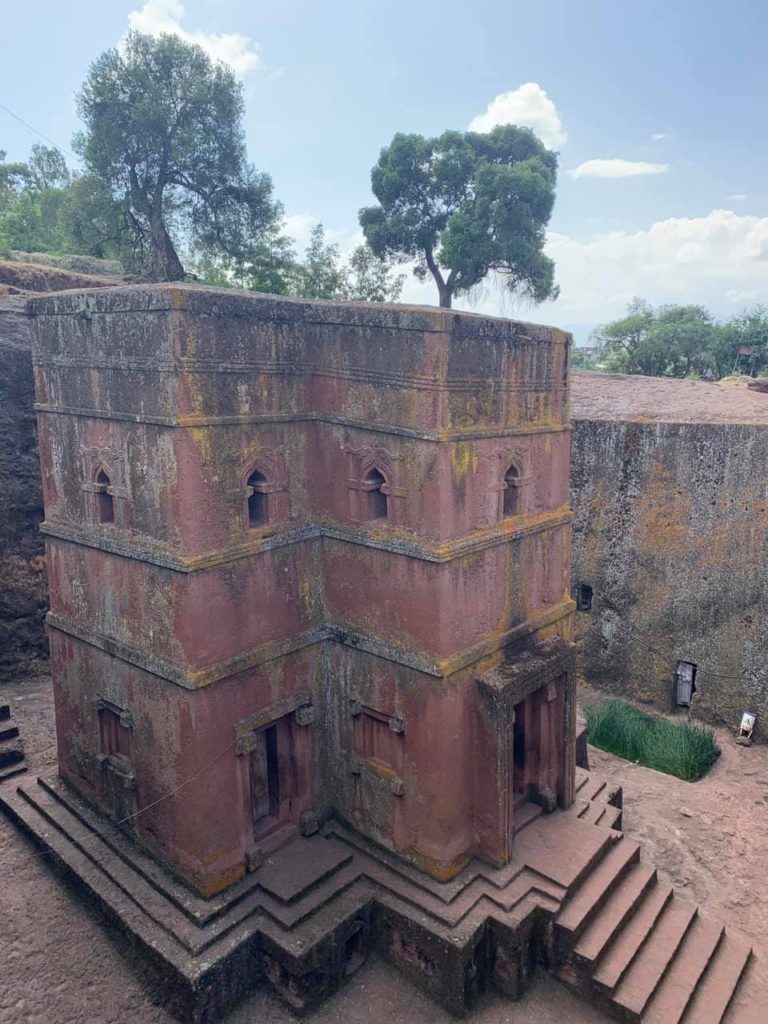
After visiting the churches we headed to town to find a traditional restaurant. In Ethiopian culture every Wednesday and Friday throughout the year are observed as fast days. It happened today was a Friday so we had a traditional vegetarian meal of injera bread with different vegetable dishes. It was delicious and one of our favourite cuisines of the trip. We finished off the evening with a coffee ceremony and trying to make our own injera bread and Nick proved to be a natural at it.
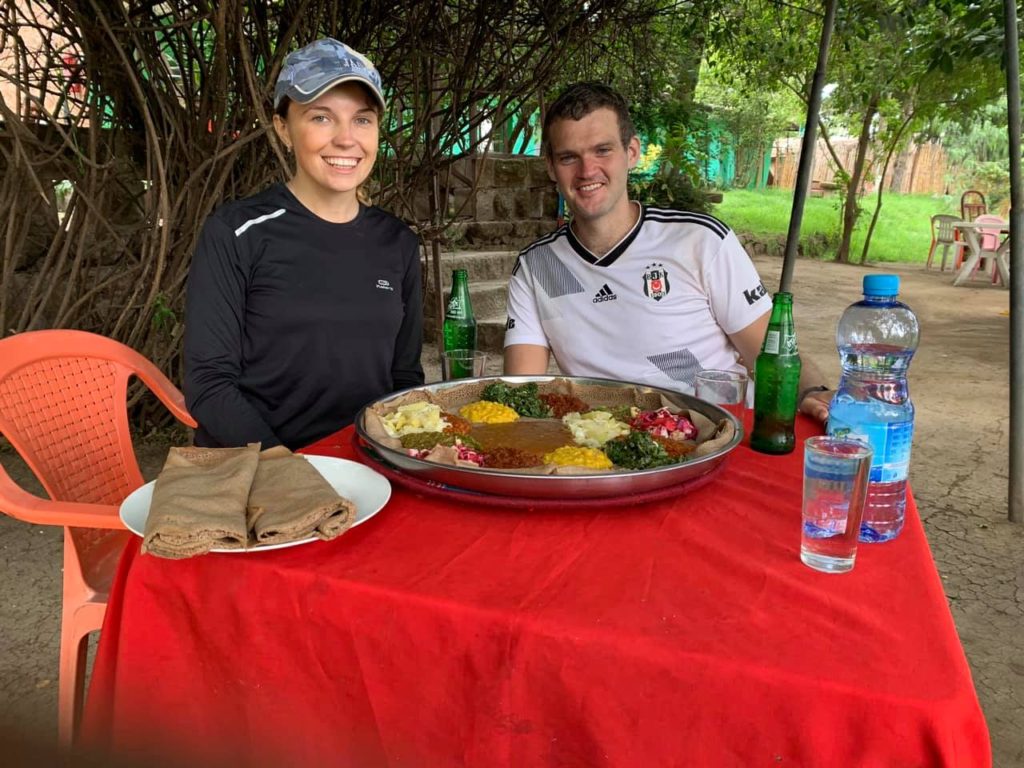
Gondar
The next day it was time to head to Gondar. With flights not running to Gondar our only option was to take a six hour car ride through the scenic Ethiopian countryside. Many people think about drought and famine when asked about Ethiopia. While Ethiopia did go through a draught period it was limited to certain parts of Tigray and was exacerbated by the civil war. Most of the country’s landscape is beautiful with green fields everywhere you turn.
Gondar is a small city in Northern Ethiopia. People go here to see the castles or to start their Simien mountains trekking from here. It is like Lalibela in its rural setting and everything is in walking distance. We visited Fasil Ghebbi castle, Debre Birhan Selassie Church and Fasilides Bath. It goes without saying 17th century castles made of stone in Africa are rare. Fasil Ghebbi castle is six castles that were built over a period of some 150 years. There is even one the Italians attempted to convert on into a European style mansion. Having a guide to talk us through the history made it a lot more interesting and fascinating going round.
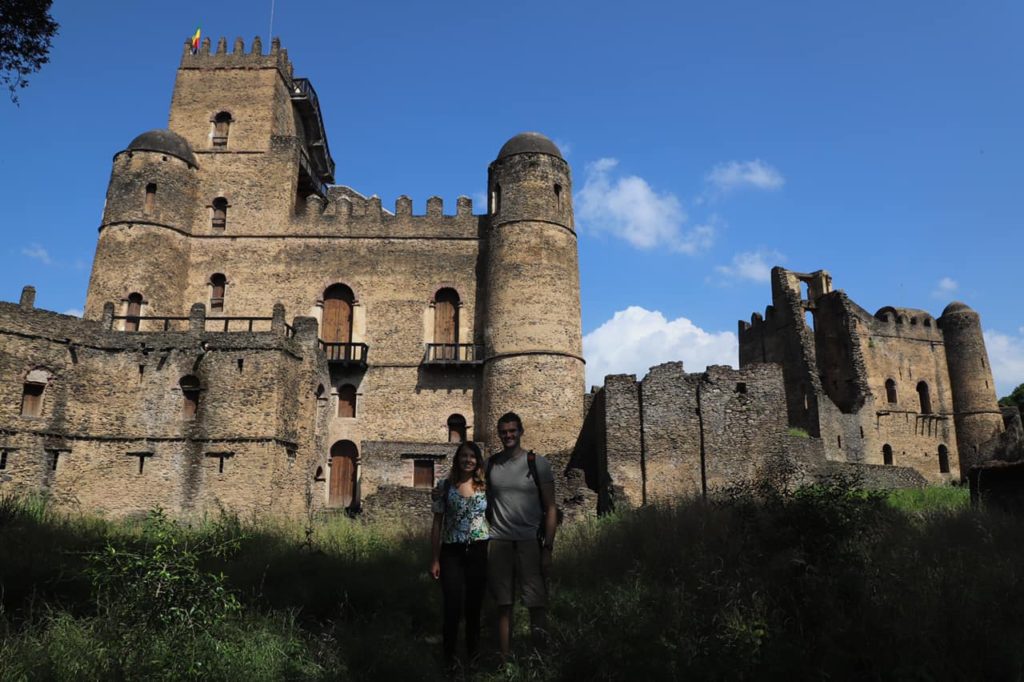
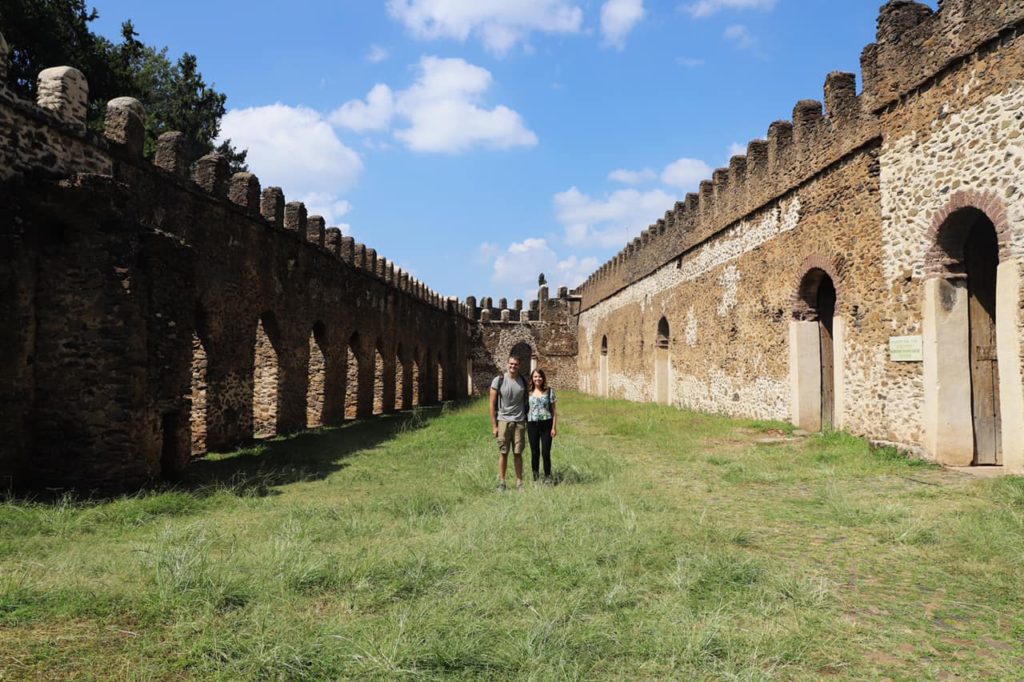
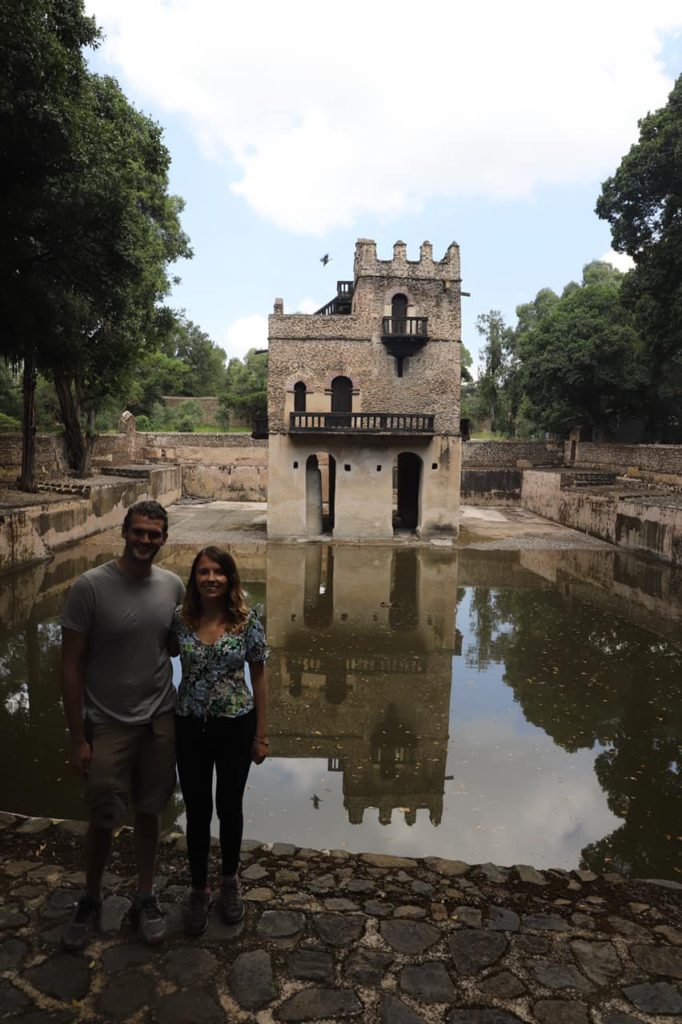
It was now time to pack our bags and prepare for our three day, two night hiking adventure in the Simien mountains in our next blog.